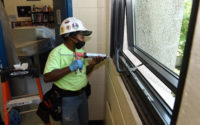Back to Schools
The financial meltdown and ensuing recession are forcing universities across the region to delay or scale back construction plans. Activity across the region in the higher education sector has slowed significantly since 2007. But there’s some good news. Despite the relative slowdown at both private and public institutions in New York, New Jersey and Connecticut, the Tri-State higher education market seems to have avoided the fate of other once-booming sectors such as residential and commercial building.
“The market, especially in New York and New Jersey, has actually weathered the storm a little bit better than the rest of the country,” says Antoine AbiDargham, vice president at New York-based WSP Cantor Seinuk.
The slowdown is more pronounced at private universities that are experiencing sharp declines in the value of their endowments. Public institutions, with state funding or bonding capabilities, are faring better. Public universities, most notably the State University of New York (SUNY) and the City University of New York (CUNY), are moving ahead with construction projects and show no signs of slowing down, says Phil Dordai, Principal at RMJM, Princeton, N.J.
At CUNY about $2 billion in projects are under construction, about the same amount as last year. Projects underway at SUNY when 2009 ended are valued at $756 million. Bidding is in process for $96 million more.
CUNY has worked closely with the state on spending plans and continues to receive funding for a wide range of projects, says Iris Weinshall, CUNY’s Vice Chancellor for Facilities Planning, Construction and Management. “To the credit of the state they recognize that agencies like the MTA, SCA and CUNY are really the lifeline for construction jobs in the City right now.”
The state is financing CUNY construction projects with bond offerings. “The last bond offering in late fall was sold out,” Weinshall says.

DORDAI
In northern New Jersey, Rutgers University has $300 million worth of projects are under construction. A similar amount is in planning and design. The level is down from last year when projects in design and construction were valued at $900 million.
Construction at Rutgers is typically funded by the university out of its own capital budget. “We have bonding capacity and typically borrow against whatever revenue sources there are – housing fees for dormitories, dining fees for dining facility and tuition for academic buildings,” explains Tony Calcado, Vice President for Facilities and Capital Planning
Last year the University successfully issued bonds in February. “We had favorable rates and a quick sell,” Calcado says.
The University of Connecticut in Storrs is in the final $700 million phase of a 20-year infrastructure program paid for with state general obligation bonds. “Projects which are fully funded are moving forward,” says James Bradley, Associate Vice President and Executive Director of Architectural and Engineering Services.
But Bradley is carefully managing projects under design which may need to be reprioritized due to funding limits. “What we anticipate over the next two years is either reduced or interrupted funding,” he says. “Our funding is very much dependent on the bond caps dictated by the state.”





